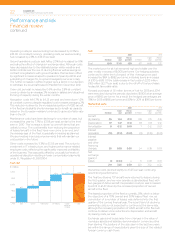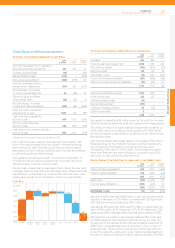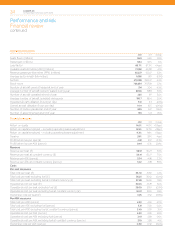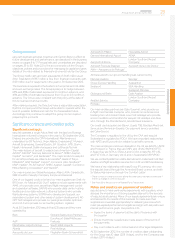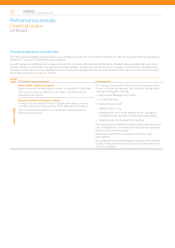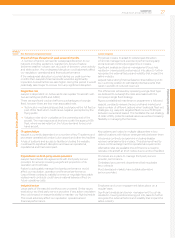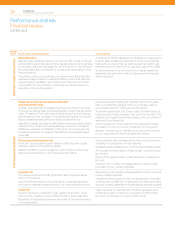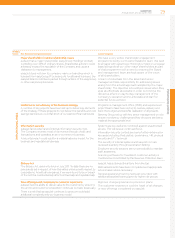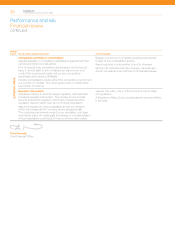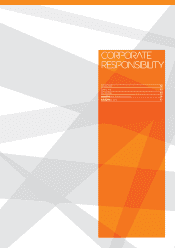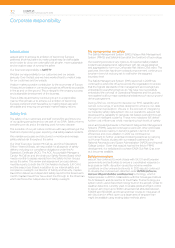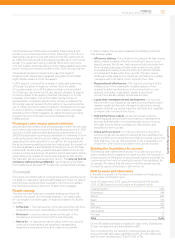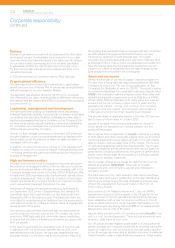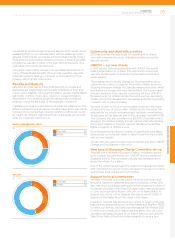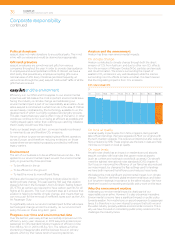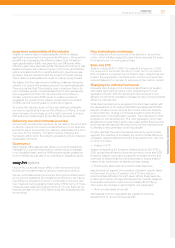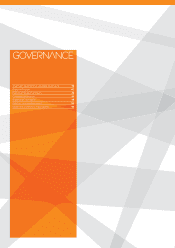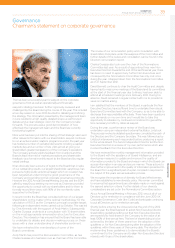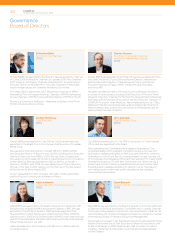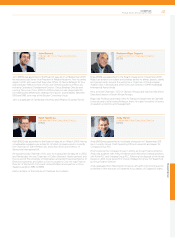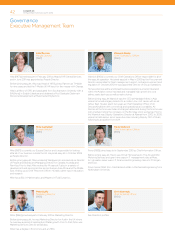EasyJet 2012 Annual Report Download - page 34
Download and view the complete annual report
Please find page 34 of the 2012 EasyJet annual report below. You can navigate through the pages in the report by either clicking on the pages listed below, or by using the keyword search tool below to find specific information within the annual report.
Introduction
easyJet aims to achieve its ambition of becoming Europe’s
preferred short-haul airline by making travel easy and affordable
andin order to do so we continually look at safer, more sustainable
and innovative ways of running the airline.
Our foremost responsibility is SAFETY.
We take our responsibility to our customers and our people
seriously. Over the last year we have worked hard to make it easy
for our customers and our people.
Aviation makes a positive contribution to the economies of Europe.
At easyJet we believe in connecting people as efficiently as possible,
in the air and on the ground. This is integral to the ongoing success
and sustainable development of the business.
There is little doubt that by continuing to act in a responsible
manner this will help us to achieve our ambition of becoming
Europe’s preferred short-haul airline by making travel easy and
affordable and ensuring we generate market leading returns.
Safety first
The safety of our customers and staff comes first and this is one
ofour guiding principles and a core part of our DNA. Safety informs
everything we do and is the starting point for every decision.
The evolution of our just culture continues with easyJet being at the
forefront of promoting open reporting of all safety-related incidents.
We maintain processes and structures to monitor and manage
safety related risk throughout the airline.
Our Chief Executive, Carolyn McCall OBE, and Chief Operations
Officer, Warwick Brady, are responsible for all aspects of safety
delivery, including our compliance obligations under the Air
Operator’s Certificate (AOC). The AOC Accountable Manager is
Carolyn McCall OBE and she chairs our Safety Review Board which
meets monthly to assess reports from the Safety Action Groups
across the airline. This review and assessment process delivers
monthly reports to both the UK Civil Aviation Authority (UK CAA)
and the easyJet plc Board. In addition to our internal safety and
compliance oversight, our Director of Safety and Security, Captain
David Prior delivers an independent safety report to the Board each
month. Captain David Prior has a direct line through to the Chairman
which reinforces the independence of safety oversight.
No compromise on safety
The Safety Management System (SMS), Fatigue Risk Management
System (FRMS) and SafetyNet are all at the forefront of technology.
Our reporting process is very rigorous. All reported safety-related
incidents are assessed and categorised, with risk values assigned
and aggregated to form our Composite Risk Value (CRV) index. This
past year, the index has shown a steady improvement, continuing a
long-term trend of reducing risk to well within the assigned
boundary level.
The Safety Management System (SMS) launched in 2009 has
continued to extend its influence across the organisation to ensure
that the highest standards of risk management and oversight are
embedded in everything that we do. We have now successfully
embedded the concept of Operational Readiness and this process
now applies to all our major operational initiatives such as our ground
de-icing programme.
During 2012 we continued to develop our SMS capability and
carried out a range of activities designed to enhance our data
management acquisition. We are in the process of integrating
ourbespoke safety data system into our operations. easyJet has
developed the capability to generate risk based oversight through
the use of intelligent systems. These new initiatives will deliver
further cost efficiencies whilst maintaining high levels of safety.
As an acknowledged leader in the field of Fatigue Risk Management
Systems (FRMS), easyJet continues to work with other world class
entities to ensure maximum benefit is gained in terms of cost
efficiencies and crew utilisation. In 2012 we continued our
commitment to further understand rostering practices by carrying
out Human Factors studies with our research partners at the
National Aeronautics and Space Administration (NASA) and Imperial
College London. Given that easyJet has led the field in FRMS
development, it is well placed to achieve EASA Sub Part Q as soon
as it becomes available.
Safety innovators
easyJet has continued to work closely with UK, EU and European
governments and authorities to ensure a coordinated response to
large scale air traffic disruption caused by extreme weather
conditions or other unexpected events. In 2012 easyJet continued
todevelop the on-board ash detection radar AVOID (Airborne
Volcanic Object Identifier and Detector) technology, which it
helped pioneer in 2010 in collaboration with the Norwegian Institute
for Air Research and its inventor Dr Fred Prata. This technology is a
system which uses infrared technology built on the aircraft, similar to
weather detectors currently used, to enable pilots and flight control
to see an ash cloud up to 100km ahead and at altitudes between
5,000ft and 50,000ft, and to amend their course to miss areas of
ash cloud, and in effect open up a larger area of airspace than
might be available using existing data methods alone.
Corporate responsibility
easyJet plc
Annual report and accounts 2012
32


